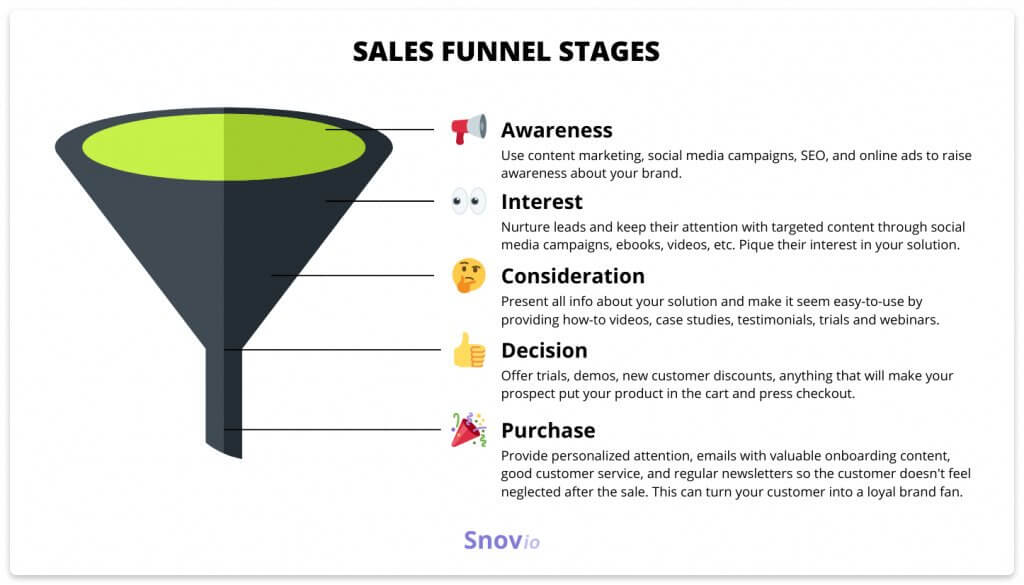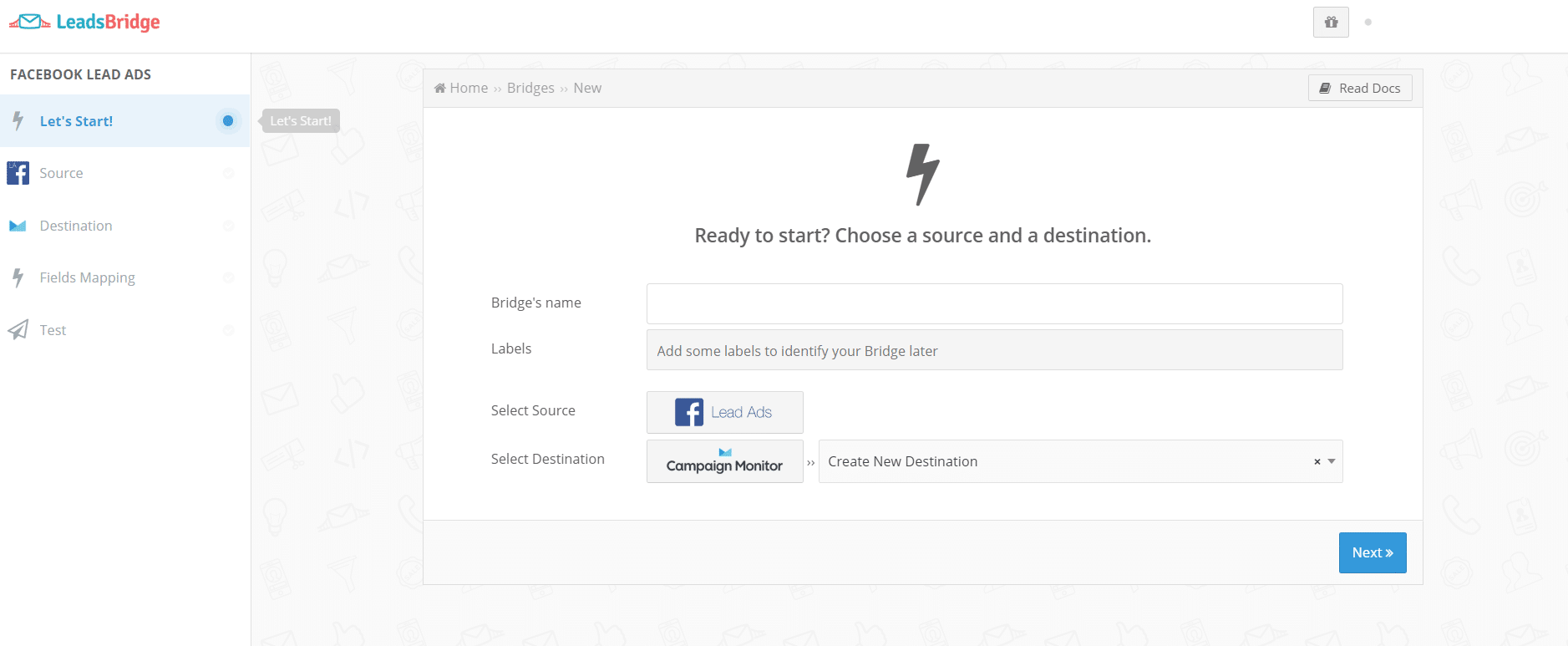Imagine turning your Facebook leads into loyal customers with just a few clicks. Sounds great, right?
Integrating your Facebook leads directly into your email marketing campaigns can be the game-changer your business needs. If you’ve ever felt overwhelmed by the sheer volume of leads and wondered how to effectively nurture them, you’re in the right place.
This guide will show you exactly how to bridge the gap between Facebook and your email marketing efforts. By the end, you’ll be equipped with the strategies to not only capture attention but also convert interest into action. Ready to unlock the full potential of your marketing efforts? Let’s dive in.

Credit: m.facebook.com
Facebook Leads Basics
Facebook Leads are a valuable asset for marketers. They help in gathering potential customers’ information directly from Facebook. This process simplifies the task of growing your audience. Businesses can then engage these leads through email marketing campaigns. Seamlessly connecting Facebook leads to email campaigns boosts customer interaction. It also enhances the overall marketing strategy.
Understanding Facebook Lead Ads
Facebook Lead Ads are user-friendly. They allow businesses to collect contact details easily. The ad format is mobile-optimized, ensuring a smooth user experience. Users can fill forms without leaving Facebook. This convenience increases the chances of form completion. More submissions mean more potential leads for your business.
Benefits Of Facebook Leads For Marketing
Facebook Leads offer numerous benefits for marketing. They provide direct access to interested individuals. This makes targeting easier and more effective. Collecting leads through Facebook reduces the cost of customer acquisition. Businesses can create personalized email campaigns. These tailored messages improve engagement and conversion rates. Using Facebook Leads also enhances brand visibility. More people become aware of your products or services.
Setting Up Facebook Lead Ads
Connecting Facebook leads to email marketing campaigns involves integrating your ad platform with email services. Use tools like Zapier to automate lead data transfer. This ensures leads are promptly added to your email lists, enhancing targeted outreach efforts. Keep messages clear and relevant to maintain engagement.
Setting up Facebook Lead Ads can seem like a daunting task, but it’s a streamlined process that opens doors to capturing valuable customer data. By directly integrating these leads into your email marketing campaigns, you can nurture prospects with personalized content. Let’s break down how to effectively set up Facebook Lead Ads to supercharge your marketing strategy. ###Creating Effective Lead Forms
Crafting a compelling lead form is crucial. Start by keeping it simple; nobody likes filling out lengthy forms. Ask for essential details only, like name and email. Use direct and clear language. Make sure your value proposition is evident—let them know what they’ll gain by signing up. A/B test different headlines and calls-to-action to see what resonates best with your audience. ###Targeting The Right Audience
Identifying and reaching the right audience is key to maximizing the effectiveness of your lead ads. Use Facebook’s targeting options to narrow down your audience based on demographics, interests, and behaviors. If you’re not sure where to start, try using a lookalike audience based on your current customers. This can help you find new leads who are likely to be interested in your offerings. Have you considered retargeting? Sometimes people need to see an ad more than once before taking action. Retargeting can help re-engage those who have shown interest but haven’t yet converted. By focusing on these aspects, you are setting the foundation for a successful Facebook lead ad campaign. What strategies have you found effective in engaging your audience on Facebook?Integrating Leads With Email Marketing
Connecting Facebook leads to email marketing campaigns boosts engagement and retention. Sync leads automatically to your email list. This ensures timely follow-ups and personalized messages. Enhance your marketing strategy by integrating these platforms seamlessly.
Integrating leads with email marketing can transform your business strategy. Imagine the potential when your Facebook leads seamlessly flow into a targeted email campaign. This integration ensures that every lead is nurtured, increasing the chance of conversion. But how do you make this connection work smoothly? Let’s dive into choosing the right tools and automating the process.Choosing The Right Email Marketing Platform
Your first step is to select an email marketing platform that aligns with your needs. Look for platforms that offer seamless integration with Facebook. Options like Mailchimp or Constant Contact are popular choices. Consider the features that are important to you. Do you need detailed analytics? Or perhaps customizable templates? Make a list of your priorities and match them to the platform’s offerings. Remember, the right platform can make lead management easier. It should simplify the process rather than complicate it.Automating The Lead Transfer Process
Automation is key to efficiency. Setting up an automated lead transfer process saves time and reduces errors. It’s like having a virtual assistant who never misses a beat. Start by connecting your Facebook lead ads with your chosen email platform. Many platforms offer direct integrations or third-party tools like Zapier to facilitate this. Next, define the workflow. Decide what happens when a lead comes in. Should they receive a welcome email immediately? Planning these steps ahead streamlines the process. Think about how this automation can grow your business. With leads automatically entering your email campaigns, you can focus on crafting compelling content and nurturing relationships. How are you currently handling your Facebook leads? Could automation make your process more efficient and error-free?Crafting Effective Email Campaigns
Learn to connect Facebook leads with email campaigns seamlessly. Gather data from Facebook lead forms. Then, integrate it into your email marketing platform. This helps create personalized and engaging email content, improving audience connection and boosting campaign success.
Crafting effective email campaigns is crucial for transforming Facebook leads into loyal customers. You have captured their interest through Facebook, but how do you nurture that interest into a genuine relationship? The answer lies in the quality and relevance of your email campaigns. Let’s dive into practical strategies to ensure your emails resonate with your audience, keeping them engaged and eager to hear more from you.Personalizing Email Content
Personalization is the key to connecting with your audience on a deeper level. Have you ever received an email that felt like it was meant just for you? That’s the magic of personalization. Use the information you’ve gathered from Facebook leads to tailor your messages. Address recipients by their names and reference their interests or previous interactions. This simple step can make your emails feel less like a generic advertisement and more like a personal conversation. Consider sharing a personal story or insight that relates to your audience’s needs. For example, if your Facebook campaign is about fitness, share a personal milestone or challenge. This can create a sense of camaraderie and inspire your audience to engage with your content.Segmenting Your Audience
Not all Facebook leads are the same, and your email campaigns shouldn’t be either. Segmentation allows you to divide your audience into groups based on characteristics like demographics, interests, or behavior. This ensures that each group receives content that is relevant and compelling to them. Imagine you have a diverse audience interested in different aspects of your product or service. By segmenting, you can send tailored content to each group—whether it’s a special offer, a helpful tip, or a success story. This targeted approach increases the likelihood of engagement and conversion. As you segment your audience, ask yourself: Are you addressing their specific needs and preferences? This reflection can guide you to craft content that truly resonates. Incorporating these strategies into your email campaigns can significantly enhance engagement and conversion rates. Remember, the goal is to make your emails a valuable part of your subscribers’ inbox, not just another message to be skipped over.Monitoring And Analyzing Campaign Performance
Monitoring and analyzing your email marketing campaigns is crucial. It helps you understand how well your Facebook leads are performing. By keeping a close eye on your campaigns, you can make informed decisions. This ensures that your marketing strategies align with your business goals. Let’s dive into how you can effectively monitor and analyze your campaigns.
Tracking Key Metrics
Tracking key metrics is essential for campaign success. Focus on open rates, click-through rates, and conversion rates. Open rates show how many people are interested in your emails. Click-through rates indicate if your content engages your audience. Conversion rates measure how many leads turn into customers. Use tools like Google Analytics for detailed insights. Regularly review these metrics to identify trends and patterns.
Adjusting Strategies For Better Results
Adjusting your strategies can lead to better campaign outcomes. If open rates are low, test different subject lines. Consider changing email delivery times. For low click-through rates, revise your email content. Make sure your call-to-action is clear and compelling. Analyze conversion rates to refine your sales funnel. Small adjustments can lead to significant improvements.

Credit: napoleoncat.com
Best Practices For Lead Nurturing
Lead nurturing is crucial for turning Facebook leads into loyal customers. It’s all about building trust and providing value over time. By following best practices, businesses can enhance their email marketing campaigns. A structured approach helps maintain engagement and interest.
Establishing A Follow-up Routine
Consistency in follow-up is key to nurturing leads effectively. Start with a welcome email. Introduce your brand and set expectations. Then, schedule regular emails with valuable content. This could be tips, industry news, or exclusive offers. Use personalization to make emails more engaging. Address the lead by name. Tailor content to their interests. Use tools to automate and track emails. This ensures no lead is left behind. Analyze open rates and engagement. Adjust strategies based on this data.
Building Long-term Customer Relationships
Long-term relationships require more than just regular emails. Focus on providing real value. Understand your leads’ needs and challenges. Offer solutions through your emails. Share success stories and testimonials. This builds trust and credibility. Encourage two-way communication. Invite feedback and questions. Respond promptly to foster a sense of care. Create a community around your brand. Use social media and forums to engage. Reward loyalty with special offers or discounts. Show appreciation for their continued support.

Credit: www.campaignmonitor.com
Frequently Asked Questions
How To Connect Facebook Leads To Email?
Integrate Facebook leads with email using a CRM tool. Choose a CRM that supports Facebook lead ads. Connect your Facebook account to the CRM. Automate email campaigns for new leads. Set up triggers for targeted email sequences. Regularly update CRM settings for accurate lead data synchronization.
How Do I Link My Facebook Lead Ads To Active Campaign?
Connect Facebook Lead Ads to ActiveCampaign using Zapier. Create a Zap linking Facebook Lead Ads to ActiveCampaign. Authenticate both accounts and map fields to start syncing leads automatically.
How Do I Link Facebook Leads To Mailchimp?
Connect Facebook leads to Mailchimp by integrating through Facebook Lead Ads. Use Mailchimp’s Lead Ads feature to sync contacts. Ensure both accounts are linked properly. Regularly update and monitor to maintain efficiency. This setup automates lead transfer, enhancing your marketing workflow seamlessly.
Conclusion
Connecting Facebook leads to email campaigns boosts engagement. Simple steps make it easy. Start by capturing leads on Facebook. Use forms to gather information. Import these leads to your email platform. Segment your audience for better targeting. Send personalized emails to keep interest high.
Monitor results and adjust your strategy. This approach strengthens relationships and enhances communication. Consistent efforts lead to improved conversions. Your marketing campaign becomes more effective. Stay focused and watch your business grow. Happy connecting!


